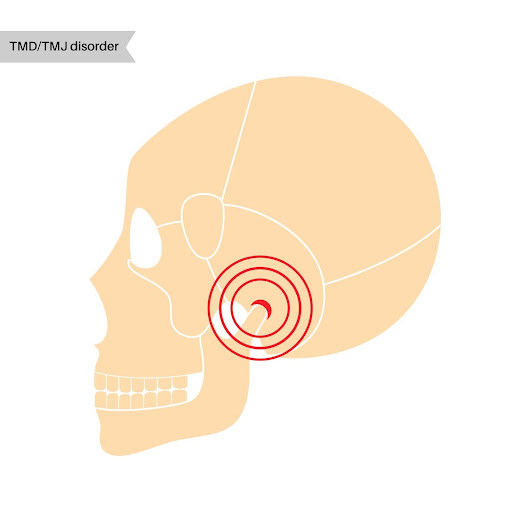Are you suffering from jaw pain, headaches, or difficulty sleeping? Bay Area Sleep Solutions & Pain Center in Santa Clara, CA, led by Dr. Pooja Goel, specializes in treating temporomandibular joint disorders (TMJ) and sleep apnea. TMJ can cause facial pain, jaw clicking/locking, and more, while sleep apnea disrupts your breathing during sleep. Our team provides customized treatment plans combining oral appliances, physical therapy, and lifestyle guidance to alleviate your symptoms and improve your quality of life. Call us today at (408) 549-1602 to schedule an appointment and get on the path to relief.

Temporomandibular joint disorders (TMD) and sleep apnea are two conditions that can impact your overall health and well-being. While they may seem unrelated, recent research has found a significant link between temporomandibular joint disorder and sleep apnea.
Explore this connection and discuss the potential impact on your health. To seek treatment, contact our dentist in Santa Clara by calling (408) 549-1602 today.
Sleep apnea is a sleep disorder that causes interruptions in breathing during sleep. There are two main types of sleep apnea:
Recent studies have suggested that there may be a link between TMJ and sleep apnea. One study found that nearly 40 percent of patients with TMD also had sleep apnea.

TMJ disorder can cause pain and discomfort in the jaw, neck, and shoulders, making it difficult to fall and stay asleep. It can also lead to muscle tension and spasms in the upper body, including the muscles that control breathing. This can make it harder to breathe normally during sleep, leading to loud snoring, a common symptom of sleep apnea that indicates airway blockages or disruptions in breathing. Not everyone with sleep apnea snores loudly, but it's a significant indicator of the condition, especially in individuals with TMJ, affecting their sleep quality and potentially leading to serious health consequences if left untreated.
On the other hand, sleep apnea can also contribute to the development of TMD. This is because sleep apnea can cause repeated teeth grinding and clenching, which can strain the TMJ and lead to painful symptoms.
Signs that TMD may be caused by sleep apnea include:
For TMD, treatment may include physical therapy, medications, or oral appliances such as splints or mouth guards.

For sleep apnea, treatment may include:
There is no cure for sleep apnea, but these treatments can help manage its symptoms and prevent apnea events or reduce their frequency and severity. A sleep study, specifically polysomnography, is necessary to diagnose obstructive or central sleep apnea, using multiple sensors to track various aspects of sleep. It's also important to note that treatment for obstructive sleep apnea may lead to treatment for emergent central sleep apnea, a condition where obstructive sleep apnea turns into the central type after treatment.
For some, treating one condition may also help alleviate the symptoms of the other. For example, treating sleep apnea with a CPAP machine may help reduce teeth grinding and clenching, which can help alleviate TMJ disorder symptoms.
If you suspect you have TMD or sleep apnea, schedule an appointment with your dentist. They can perform an examination and refer you to a sleep specialist or an oral and maxillofacial surgeon. The doctor you’re referred to will depend on your TMD symptoms.
There’s some evidence to suggest that treating sleep apnea can help alleviate symptoms of TMD. When sleep apnea is treated with a continuous positive airway pressure (CPAP) machine or other methods, it can reduce the tension and strain on the jaw joint during sleep. This can improve TMD symptoms, such as pain and difficulty opening the mouth.
For individuals with TMD, sleeping on their back with a small pillow or rolled towel under the neck for support is recommended. Sleeping on the stomach should be avoided as it can put unnecessary strain on the neck and jaw. Consult a sleep specialist for more tips on managing TMD and sleep apnea.
If you’re experiencing symptoms of TMJ or sleep apnea, seek medical attention from our Santa Clara, CA dentist. Dr. Goel can properly diagnose your condition and recommend the best treatment for your needs. Don't hesitate to speak up and seek help — these conditions can significantly impact your quality of life and overall health.
Take control of your health and schedule a consultation today by calling (408) 549-1602.
© 2017 BAYAREA SLEEP SOLUTIONS & PAIN CENETER. ALL RIGHTS RESERVED